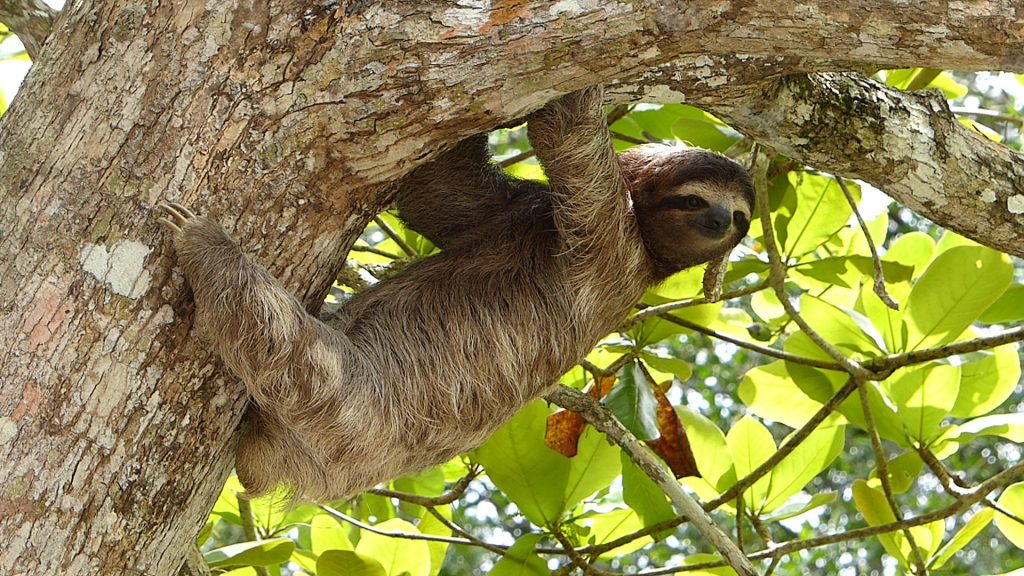New Study Found Costa Rican sloth fur may Harbor Superbugs Solution
Merxwire
16 Aug 2023, 14:52 GMT+10
Due to improper treatment or overuse of antibiotics, bacteria, and microorganisms have continued to evolve, becoming resistant to existing antibiotics and then evolving into "superbugs" that cannot be resisted. Scientists have discovered that sloth fur may harbor antibiotic-producing bacteria, which may provide a solution to the crisis.

TAIPEI, TAIWAN (Merxwire) - New research has garnered a lot of attention after finding that sloths living in Costa Rica may hold the light of the future of medicine. Due to inappropriate or excessive use of antibiotics in recent years, bacteria and microorganisms have continued to evolve, becoming resistant to existing antibiotics and evolving into superbugs. Scientists have discovered that sloth fur may harbor antibiotic-producing bacteria, which may provide a solution to the problem.
The medical journal "The Lancet" revealed in "Global Research on Antimicrobial Resistance" published in 2022 that antimicrobial resistance (AMR) has caused 1.27 million deaths worldwide, exceeding the number of deaths from AIDS or malaria each year. The number of deaths related to AMR is about 4.95 million, which shows that this problem has seriously affected the health of the world's population.
The study, which analyzed statistics from 204 countries or regions, found that the problem has spread worldwide. The researchers knew from hospital records that the groups most at risk were children, with about one-fifth of the directly related deaths occurring in children under the age of five. Regionally, sub-Saharan Africa and South Asia had the highest rates, with 24 deaths per 100,000 associated with AMR. High-income countries accounted for a lower proportion, with 13 deaths per 100,000 population.
WHO estimates that by 2050, the annual death toll due to AMR will reach 10 million. Cornelius Clancy, a professor at the Department of Medicine at the University of Pittsburgh, believes that the traditional antibiotic model that has been used for decades has come to an end, starting with penicillin. One of the ways to improve microbial resistance is to find a new form of treatment. And the ecological chain that inhabits the sloth's fur ignites their hopes.
The slow and lovely sloth is an important symbol of the Central American country Costa Rica, attracting many tourists to come here every year for pilgrimage. The main growth area is in the jungle canopy along the Caribbean Sea. Since the numbers of the two-toed sloth and the three-toed sloth are decreasing, they are currently included in the Red List of Threatened Species by the International Union for Conservation of Nature (IUCN). Scientists in Costa Rica found that there are abundant species living in its fur, including microorganisms such as insects, fungi, algae, and bacteria. Some species have the possibility of causing disease and infection, but the sloth does not seem to be affected.

Max Chavarria, a researcher at the University of Costa Rica, mentioned that when we look at the fur of the sloth, we will find tiny creatures moving, including various insects, moths, and bacteria and microorganisms that we cannot see with the naked eye. For such a rich variety of organisms to coexist and for the slow sloth to survive at ease, there must be a balance system.
The research team took fur samples from two-toed and three-toed sloths to confirm whether there are microorganisms that can produce antibiotics on the sloth's fur, allowing it to fight against pathogens brought by various insects or bacteria to maintain balance. They found 20 possible microorganisms from the fur samples, and are now working on research and naming, hoping to find antibiotics that can be applied to the human body in the future to help fight germs.
Although it will take some time to confirm whether these microorganisms are beneficial to human health, at least it allows scientists to find new ingredients that can be used to combat antibiotic resistance in the medium and long term to control the proliferation of pathogenic bacteria or inhibit fungi. These possibilities may lead to a new generation of antibiotics, just as the British scientist Alexander Fleming discovered penicillin in 1928. Research on sloth fur has been published in "Environmental Microbiology".
 Share
Share
 Tweet
Tweet
 Share
Share
 Flip
Flip
 Email
Email
Watch latest videos
Subscribe and Follow
Get a daily dose of Ohio Standard news through our daily email, its complimentary and keeps you fully up to date with world and business news as well.
News RELEASES
Publish news of your business, community or sports group, personnel appointments, major event and more by submitting a news release to Ohio Standard.
More InformationUS
SectionFilmmaker joins biotech effort to bring back extinct giant bird
WASHINGTON, D.C.: Filmmaker Peter Jackson's lifelong fascination with the extinct giant New Zealand flightless bird called the moa...
Houthis attack cargo ship in Red Sea, raising maritime safety fears
DUBAI, U.A.E.: A cargo ship flagged under Liberia, known as the Eternity C, sank in the Red Sea following an attack executed by Yemen's...
India seeks WTO nod for retaliatory tariffs on US
NEW DELHI, India: India has submitted a revised proposal to the World Trade Organization (WTO) in Geneva to implement retaliatory tariffs...
Trump administration restarts Ukraine arms deliveries
WASHINGTON, D.C.: The Trump administration has started sending some weapons to Ukraine again, just a week after the Pentagon told officials...
AI boom propels Nvidia to historic market cap milestone
SAN FRANCISCO, California: Nvidia, the Silicon Valley chipmaker at the heart of the artificial intelligence boom, this week briefly...
AI saves $500 million for Microsoft as layoffs reshape strategy
REDMOND, Washington: Artificial intelligence is transforming Microsoft's bottom line. The company saved over US$500 million last year...
International
SectionHouthis attack cargo ship in Red Sea, raising maritime safety fears
DUBAI, U.A.E.: A cargo ship flagged under Liberia, known as the Eternity C, sank in the Red Sea following an attack executed by Yemen's...
Trump administration restarts Ukraine arms deliveries
WASHINGTON, D.C.: The Trump administration has started sending some weapons to Ukraine again, just a week after the Pentagon told officials...
From France’s shores, desperate migrants look to reach British coast
ECAULT BEACH, France: On clear days, the white cliffs of the United Kingdom, are visible from northern France, where men, women, and...
CDC: US records 1,288 measles cases, most since 1992 outbreak
ATLANTA, Georgia: The United States is facing its worst measles outbreak in more than three decades, with 1,288 confirmed cases so...
Gaza War sucking life out of an Israeli generation
In the past month alone, 23 Israeli soldiers have been killed in Gaza—three more than the number of remaining living hostages held...
Faulty IT system at heart of UK Post Office scandal, says report
LONDON, U.K.: At least 13 people are believed to have taken their own lives as a result of the U.K.'s Post Office scandal, in which...











